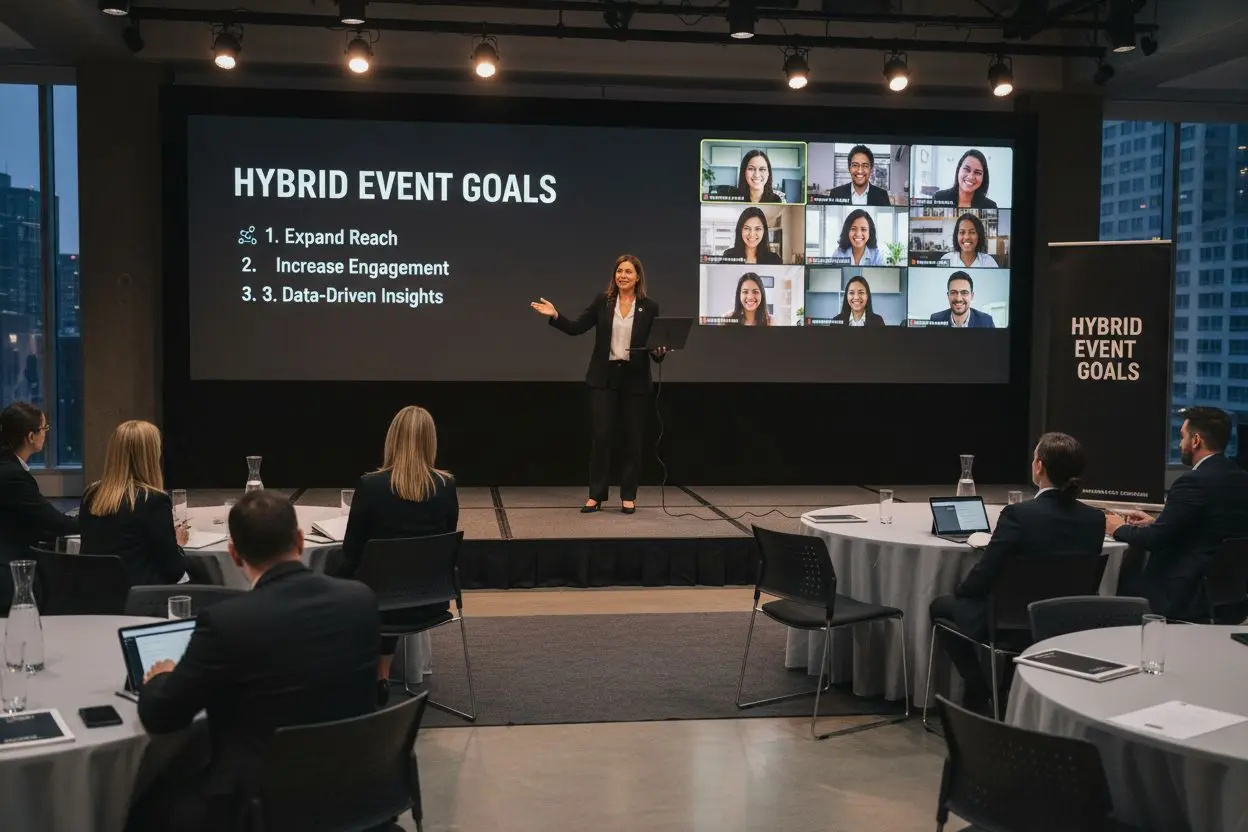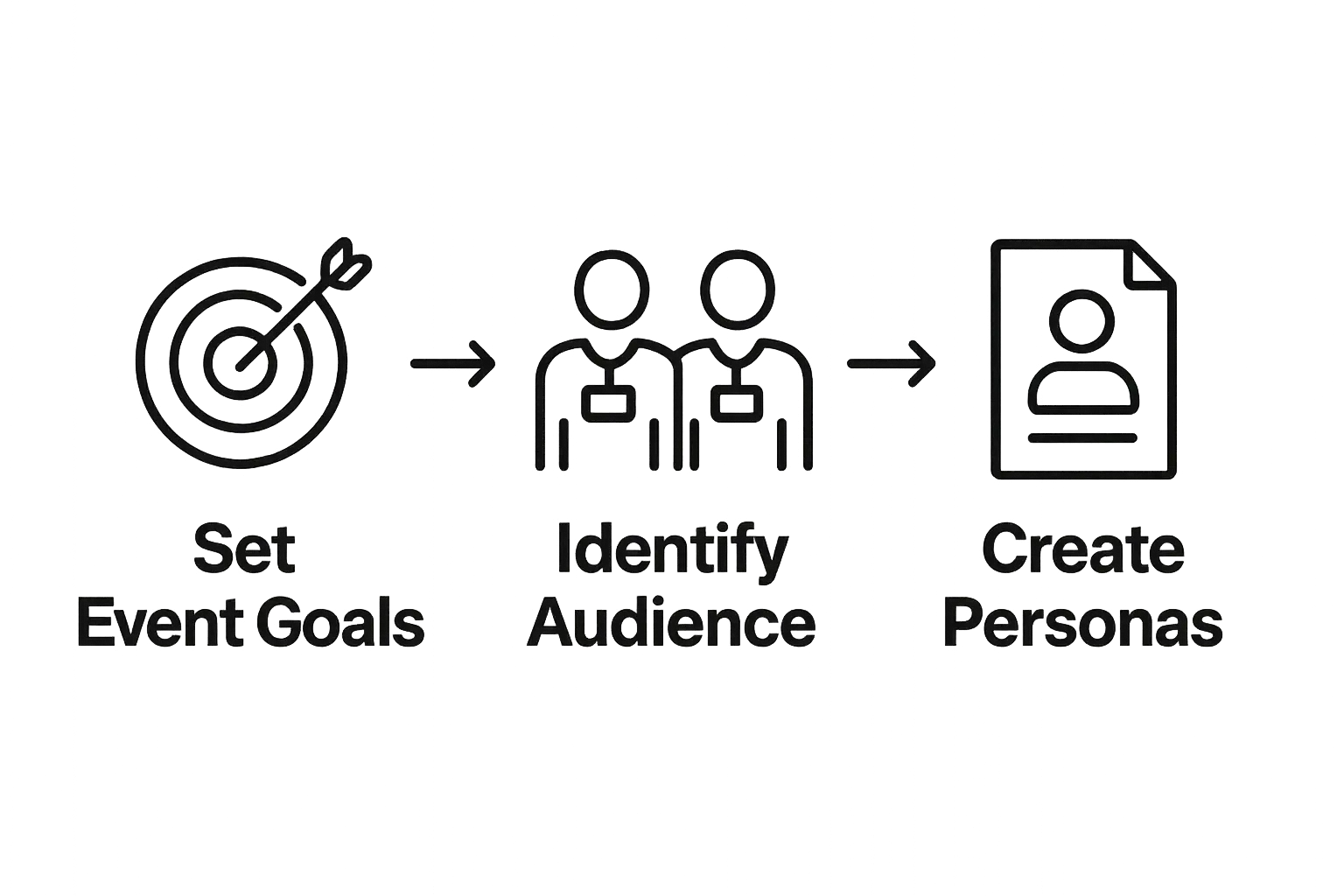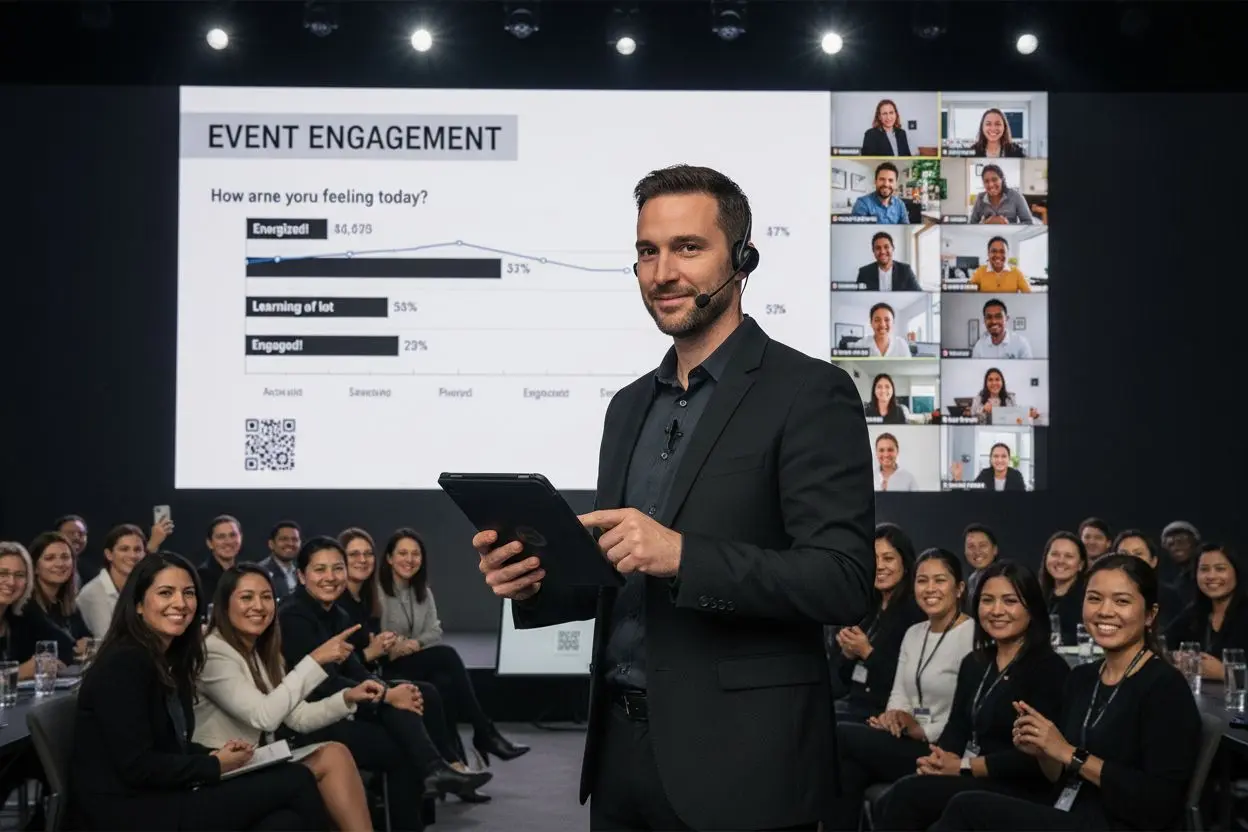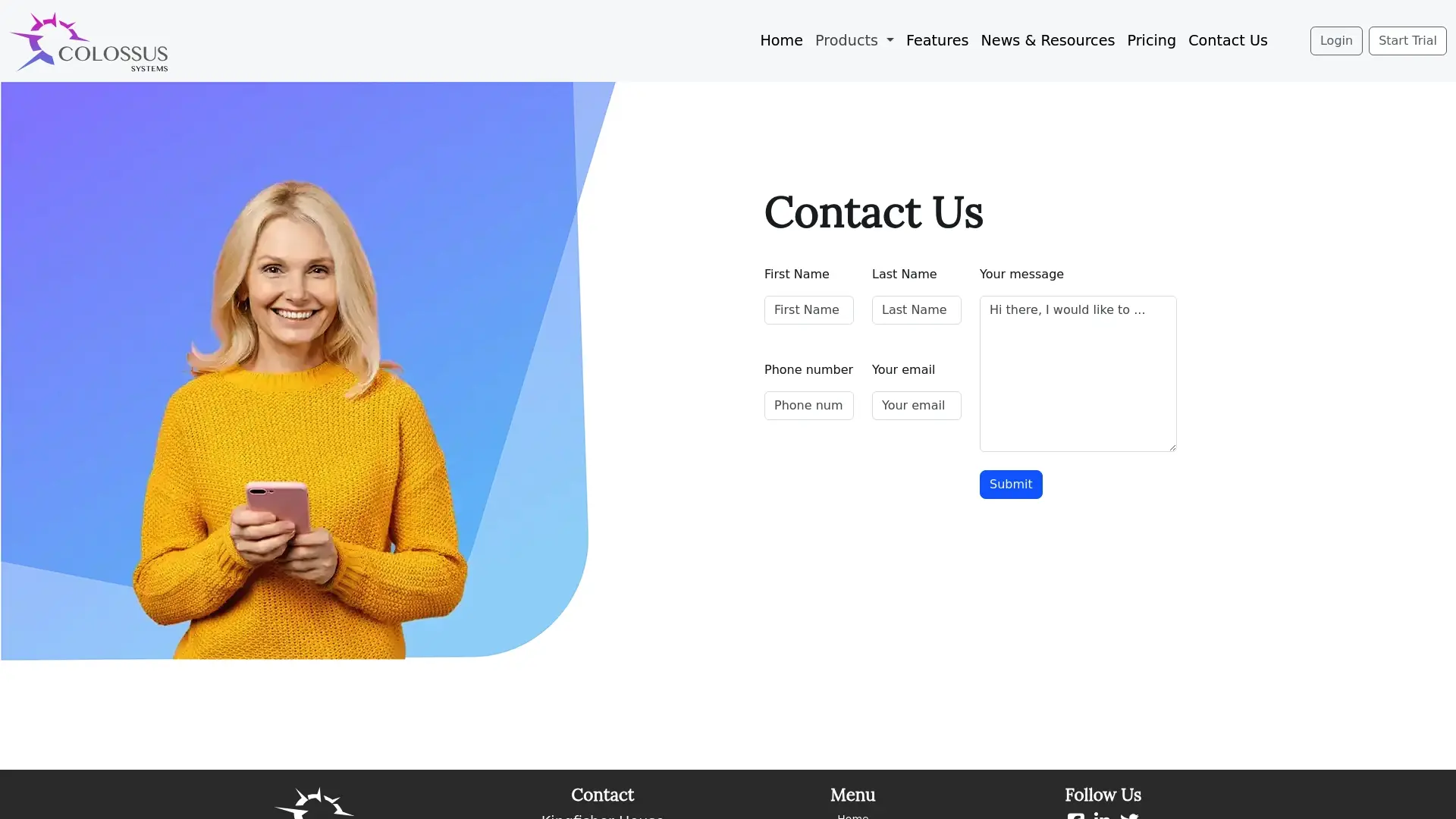Master Hosting Hybrid Events: Engage Your Audience Effectively

Hybrid events sound simple at first. Bring people together in person and online at the same time and you can double your reach. The surprising bit is that most organisers fail to create an inclusive experience for both groups. With precise goal setting and tailored technology, you can turn a standard gathering into a truly unified event, where every attendee feels equally engaged.
Table of Contents
- Step 1: Define Your Event Goals And Audience
- Step 2: Choose The Right Technology And Tools
- Step 3: Develop A Comprehensive Event Plan
- Step 4: Promote Your Event To Both Audiences
- Step 5: Execute The Event With Engagement And Interaction
- Step 6: Gather Feedback And Evaluate Event Success
Quick Summary
| Key Point | Explanation |
|---|---|
| 1. Define Clear Event Goals | Establish specific objectives to guide event structure and engagement, ensuring purposeful attendee experiences. |
| 2. Understand Your Audience | Create participant personas to tailor experiences for diverse preferences and technological capabilities for both formats. |
| 3. Choose Accessible Technology | Select user-friendly platforms that support both in-person and virtual engagement, ensuring all can participate effectively. |
| 4. Develop a Detailed Event Plan | Create a comprehensive timeline, communication protocols, and contingency strategies for smooth execution of the event. |
| 5. Collect Feedback for Improvement | Gather multi-dimensional feedback from both groups to assess performance and identify areas for enhancement in future events. |
Step 1: Define Your Event Goals and Audience
Successful hosting of hybrid events begins with crystal clear strategic planning. Before diving into technical logistics, you must establish precise objectives and understand your target audience comprehensively. This foundational step determines the entire event’s structure, engagement strategies, and ultimate success.
Defining your event goals requires a strategic approach that considers both your organization’s broader mission and the specific outcomes you want to achieve. Are you aiming to educate members, generate networking opportunities, showcase industry innovations, or drive membership engagement? Each objective demands a nuanced event design. Precise goal setting transforms a generic gathering into a purposeful experience.
Audience analysis represents the critical companion to goal definition. Understanding participant demographics, professional backgrounds, technological comfort levels, and potential participation barriers helps you craft a truly inclusive hybrid event. Professional associations and membership organizations must recognize that hybrid participants have diverse preferences and technological capabilities. Some attendees might prefer robust virtual participation, while others seek rich in-person interactions.
Consider creating participant personas that represent your different audience segments.
 These fictional yet data-driven profiles help you anticipate needs, design tailored experiences, and select appropriate engagement tools. A mid-career professional might prioritize concise, actionable content, whereas a senior executive may value deeper strategic discussions. Learn more about designing effective event strategies for membership groups to refine your approach.
These fictional yet data-driven profiles help you anticipate needs, design tailored experiences, and select appropriate engagement tools. A mid-career professional might prioritize concise, actionable content, whereas a senior executive may value deeper strategic discussions. Learn more about designing effective event strategies for membership groups to refine your approach.
Successful hybrid events demand flexibility. Your goals and audience understanding should allow for adaptive planning that accommodates both physical and digital participants. This means designing experiences that feel equally compelling whether someone joins from a conference room or their home office. Technology, content delivery, and interaction mechanisms must bridge potential participation gaps.
Verification of successful goal and audience definition involves asking yourself key questions: Have you clearly articulated 2-3 specific event outcomes? Can you describe your typical attendee in detail? Do your planned experiences genuinely address participant needs? If you can answer these confidently, you are well-positioned to create a remarkable hybrid event experience.
Step 2: Choose the Right Technology and Tools
Selecting appropriate technology transforms hybrid events from basic gatherings into engaging, interactive experiences. The right technological ecosystem bridges physical and virtual participant experiences, ensuring seamless communication and connection. Your technology choices will fundamentally define how effectively participants interact, learn, and network.
Platform selection represents the most critical technological decision. Your chosen solution must accommodate diverse participant needs while providing robust features for real-time engagement. Professional membership organizations require platforms supporting simultaneous in-person and virtual participation with intuitive interfaces. Look for tools offering high-quality video streaming, interactive chat functions, breakout room capabilities, and reliable audio transmission. Explore our comprehensive guide on hosting effective webinars to understand advanced digital event strategies.
Consider technological accessibility as a paramount concern. Not all participants possess identical technical skills or equipment. Select platforms with user-friendly interfaces, compatible across multiple devices and operating systems. Ensure your technology supports accessibility features like live captioning, screen reader compatibility, and adjustable video/audio settings. These considerations demonstrate organizational inclusivity and commitment to participant experience.
Technology infrastructure extends beyond primary event platforms. Audio-visual equipment for physical venues requires strategic planning.
Professional-grade cameras capturing presenter movements, microphones ensuring clear sound transmission, and reliable internet connections become fundamental. Test your technical setup thoroughly before the event, conducting multiple rehearsals to identify potential connectivity issues or equipment limitations.
Budget considerations play a significant role in technology selection. While cutting-edge tools offer impressive features, organizations must balance technological capabilities with financial constraints. Many platforms offer tiered pricing models, allowing organizations to select packages matching their specific event requirements. Prioritize solutions providing the most essential features within your budget, remembering that participant experience matters more than expensive, complex systems.
Verification of successful technology selection involves answering critical questions: Can all participants easily access the platform? Does the technology support your defined event goals? Have you conducted comprehensive technical rehearsals? If you can confidently answer these, you have successfully navigated the complex landscape of hybrid event technological infrastructure.
Step 3: Develop a Comprehensive Event Plan
A comprehensive event plan serves as the strategic blueprint that transforms your hybrid event vision into reality. This critical stage bridges your initial goals with tangible execution, requiring meticulous attention to logistical, technological, and participant experience details. Thorough planning determines the difference between an average event and an exceptional experience.
Timeline development represents the foundational element of your comprehensive plan. Begin by establishing a detailed chronological roadmap that encompasses pre-event preparation, live event execution, and post-event follow-up. Your timeline should include critical milestones such as content development, speaker confirmations, technical rehearsals, marketing campaigns, and participant communication schedules. Learn strategies to increase event attendance that will help refine your planning approach.
Communication protocols form another essential component of your hybrid event plan. Develop clear guidelines for how in-person and virtual participants will interact, receive information, and engage with content. This involves creating dedicated communication channels, establishing response time expectations, and designing interactive segments that feel equally compelling for both physical and digital attendees. Consider developing a comprehensive communication matrix that outlines specific touchpoints, responsible team members, and expected communication methods for each event phase.
Contingency planning becomes paramount in hybrid event environments. Technology failures, unexpected speaker cancellations, or connectivity issues can disrupt event flow. Develop robust backup strategies that include alternative technology platforms, pre-recorded content options, and flexible presentation formats. Assign specific team members to monitor technical performance and manage potential disruptions in real-time. Your plan should include detailed protocols for managing unexpected challenges without compromising participant experience.
Budget allocation requires strategic consideration within your comprehensive event plan. Beyond technology and venue costs, factor in expenses related to speaker honorariums, marketing efforts, technical support, and potential equipment rentals. Create a detailed financial breakdown that allows for flexibility while maintaining fiscal responsibility. Tracking potential revenue streams and managing expenditures carefully ensures your hybrid event remains both financially viable and high-quality.
Verification of a successful event plan involves asking critical questions: Have you mapped out every significant event phase? Do you have clear contingency strategies? Can your team articulate the event’s goals and execution approach? If you can confidently answer these, your comprehensive plan is well-positioned to deliver an outstanding hybrid event experience.
Here is a summary checklist to verify your event plan is ready for a successful hybrid experience.
| Verification Criteria | Description |
|---|---|
| Clear Event Phases | All significant event phases (preparation, execution, follow-up) are mapped out with defined milestones. |
| Contingency Strategies | Backup plans for possible disruptions, including technology failures and speaker cancellations, are clearly documented. |
| Team Alignment | Every team member understands the event goals and their execution responsibilities. |
| Communication Matrix | A protocol exists detailing how and when participants will receive event information, ensuring clarity for in-person and virtual audiences. |
| Budget Allocation | A detailed budget covers all key expenses, including technology, venue, speakers, and technical support. |
| Technical Rehearsals | Multiple rehearsals have been completed to identify and resolve possible technical issues. |
| Participant Experience | Both physical and digital participant needs and preferences have been addressed in the event plan. |
Step 4: Promote Your Event to Both Audiences
Successful hybrid event promotion requires a nuanced, strategic approach that speaks directly to both in-person and virtual participants. Your marketing efforts must transcend traditional single-channel communication, creating compelling narratives that resonate across different participant preferences and engagement modes. Effective promotion transforms event awareness into genuine excitement and anticipated participation.
Multi-channel marketing becomes your primary strategy for reaching diverse audience segments. Email campaigns, social media platforms, professional networking sites, and targeted digital advertising offer complementary approaches to event promotion. Craft messaging that highlights unique value propositions for both physical and virtual participants, emphasizing the flexibility and inclusive nature of your hybrid event. Explore our comprehensive event marketing strategies to refine your promotional approach.
Personalization represents a critical element in contemporary event marketing. Segment your promotional content to address specific audience personas, recognizing that virtual attendees might prioritize different aspects compared to in-person participants. For virtual audiences, emphasize convenience, on-demand content access, and networking opportunities. For physical attendees, highlight experiential elements like venue amenities, networking sessions, and exclusive in-room interactions. Create targeted messaging that speaks directly to each group’s unique motivations and expectations.
Technology integration amplifies your promotional reach. Leverage event registration platforms that provide seamless sign-up experiences for both participation formats. Include clear, detailed information about technological requirements, participation methods, and what attendees can expect during the event. Transparent communication reduces potential barriers and increases participant confidence.
The following table outlines the main options for promoting your hybrid event, highlighting their key purposes and how they best address different audience needs.
| Promotion Method | Primary Purpose | Audience Focus |
|---|---|---|
| Email Campaigns | Inform and remind potential attendees | Both (personalised by segment) |
| Social Media | Generate buzz and share updates | Both (wider reach) |
| Digital Advertising | Target specific demographics | Both (customisable focus) |
| Networking Sites | Connect with relevant professionals | Primarily virtual |
| Teaser Content | Build anticipation and showcase value | Both (engagement driver) |
| Event Registration Platforms | Streamline sign-up and information | Both (easy access) |
| Pre-Event Webinars/Q&A | Offer previews and boost early engagement | Both (interactive preview) |
Content marketing emerges as a powerful promotional tool. Create teaser content such as speaker highlight reels, behind-the-scenes event preparation videos, and participant testimonials that generate anticipation. These materials should be easily shareable across digital platforms, encouraging organic promotion through participant networks. Consider hosting pre-event webinars or live Q&A sessions that offer a preview of the event’s value and build initial engagement.
Verification of successful event promotion involves tracking key metrics: Are registration numbers increasing? Is your content generating meaningful engagement? Do potential participants understand the unique value of your hybrid format? If you can confidently answer these questions, your promotional strategy is effectively positioning your event for maximum participation.
Step 5: Execute the Event with Engagement and Interaction
Event execution represents the moment where strategic planning transforms into live participant experience. Successful hybrid events demand dynamic, inclusive interaction strategies that seamlessly connect physical and virtual participants. The goal extends beyond merely presenting content; you must create an immersive environment where every attendee feels equally valued and engaged.
Real-time interaction mechanisms become crucial in bridging potential participation gaps. Implement interactive tools like live polling, Q&A sessions, and digital chat functionalities that allow simultaneous engagement across both event formats. Design these interactive elements to feel natural and intuitive, encouraging participants to contribute regardless of their physical or digital location. Discover effective community engagement tactics to enhance your interaction strategies.
Technical facilitation requires dedicated team members monitoring both physical and virtual event spaces. Assign specific roles for managing digital interactions, ensuring virtual participants receive equal attention and opportunity to contribute. This might involve having a dedicated digital moderator who actively curates online discussions, relays virtual questions to in-person presenters, and maintains a smooth communication flow between different participant groups. Continuously validate audio-visual quality, manage potential connectivity issues, and provide real-time technical support to maintain a professional event experience.
Networking opportunities demand intentional design in hybrid environments. Create structured networking sessions that deliberately mix physical and virtual participants, using breakout rooms, digital matchmaking tools, and guided interaction prompts. These strategies help overcome the potential isolation that remote participants might experience. Consider implementing digital business card exchanges, themed discussion groups, and timed networking segments that encourage meaningful connections across participation formats.
Presentation delivery requires adaptability and technological sophistication. Speakers must be trained to engage simultaneously with in-room and online audiences, maintaining eye contact with physical participants while also acknowledging digital attendees. Use picture-in-picture technologies, multiple camera angles, and interactive presentation tools that make virtual participants feel integrated into the live experience. Ensure presentations are visually compelling and technically optimized for both in-person projection and digital streaming.
Verification of successful event execution involves assessing participant feedback, interaction levels, and technical performance. Ask yourself: Did participants from both formats report feeling equally engaged?
 Were technical interactions smooth and user-friendly? Did the event achieve its predefined objectives? Comprehensive post-event surveys and immediate feedback mechanisms will help you validate the effectiveness of your hybrid event strategy.
Were technical interactions smooth and user-friendly? Did the event achieve its predefined objectives? Comprehensive post-event surveys and immediate feedback mechanisms will help you validate the effectiveness of your hybrid event strategy.
Step 6: Gather Feedback and Evaluate Event Success
Post-event evaluation represents the critical reflection phase that transforms individual event experiences into strategic organizational learning. Comprehensive feedback collection provides the insights necessary to continuously improve future hybrid event experiences. This step is not merely about measuring success but understanding the nuanced participant journey across different engagement formats.
Multi-dimensional feedback collection requires a strategic approach that captures perspectives from both in-person and virtual participants. Design survey instruments that address specific hybrid event dimensions, including technological experience, content relevance, interaction quality, and overall participant satisfaction. Utilize a combination of quantitative rating scales and qualitative open-ended questions that allow participants to provide detailed insights about their event experience. Learn more about effective community engagement evaluation tactics to refine your feedback methodologies.
Analytical assessment extends beyond participant surveys. Leverage platform analytics to gather objective data about participant behaviors, engagement levels, and interaction patterns. Track metrics such as session attendance duration, polling participation rates, chat interaction frequencies, and digital networking connections. These quantitative insights complement subjective feedback, providing a comprehensive understanding of event performance. Pay special attention to differences between physical and virtual participant experiences, identifying potential gaps in engagement or technological accessibility.
Technological performance represents a crucial evaluation dimension in hybrid events. Review technical logs, connectivity statistics, and platform interaction data to understand the robustness of your technological infrastructure. Assess factors like streaming quality, audio-visual synchronization, digital interaction tool effectiveness, and overall platform reliability. Identify potential technical limitations that might have hindered participant experience and develop targeted improvement strategies for future events.
Feedback integration requires a structured approach to organizational learning. Create a systematic process for reviewing, categorizing, and acting upon collected insights. Develop a feedback summary report that highlights key strengths, identifies improvement areas, and generates actionable recommendations for future hybrid events. Involve cross-functional teams in this review process, ensuring perspectives from technology, content, marketing, and participant experience are considered.
Verification of successful event evaluation involves asking critical reflective questions: Have you collected comprehensive feedback from both participant groups? Do you understand the technical and experiential challenges encountered? Can you articulate specific improvements for future events? If you can confidently address these questions, you have transformed your event from a singular occurrence into a continuous learning opportunity.
Take Your Hybrid Events from Average to Exceptional
Are you striving for flawless hybrid event execution but feeling overwhelmed by the challenges? Many membership organisations face recurring frustrations such as disconnected audiences, unpredictable technology, patchy engagement, and time-consuming manual processes. The article highlighted the importance of clear goal-setting, audience analysis, efficient technology, and actionable feedback for running outstanding hybrid events. Yet, what if you could implement those steps seamlessly within one powerful platform—removing guesswork and complexity from your next hybrid experience?

Colossus Systems empowers you to transform your hybrid events with confidence. Our unified SaaS platform combines event planning, member management, engagement tools, marketing, and analytics tailored for membership-based organisations. Ready to boost attendance and deliver richer engagement for both in-person and virtual audiences? Streamline your registration, optimise communication, and capture actionable insight—all with ease.
Let us help you unlock higher participation and measurable growth for your next event. Contact our team today and discover the smarter way to plan hybrid events your members will love.
Frequently Asked Questions
How do I define goals for my hybrid event?
To define goals for your hybrid event, consider your organisation’s broader mission alongside specific outcomes you wish to achieve, such as education, networking opportunities, or membership engagement. Articulating 2-3 clear objectives will guide your event structure effectively.
What technology should I choose for hosting a hybrid event?
Select a platform that supports seamless communication between in-person and virtual attendees, featuring high-quality video streaming, interactive chat functions, and breakout room capabilities. Ensure the technology is user-friendly and accessible to participants with varying technical skills.
How can I promote my hybrid event to different audiences?
Utilise a multi-channel marketing approach by leveraging email campaigns, social media, and targeted digital advertising. Craft personalised messaging that resonates with both in-person and virtual participants, highlighting the unique benefits of their chosen participation format.
What methods can I use to gather feedback after my hybrid event?
Gather feedback through surveys that capture both quantitative and qualitative insights from attendees. Use platform analytics to assess engagement levels and consider conducting post-event discussions to understand participant experiences across both in-person and virtual environments.